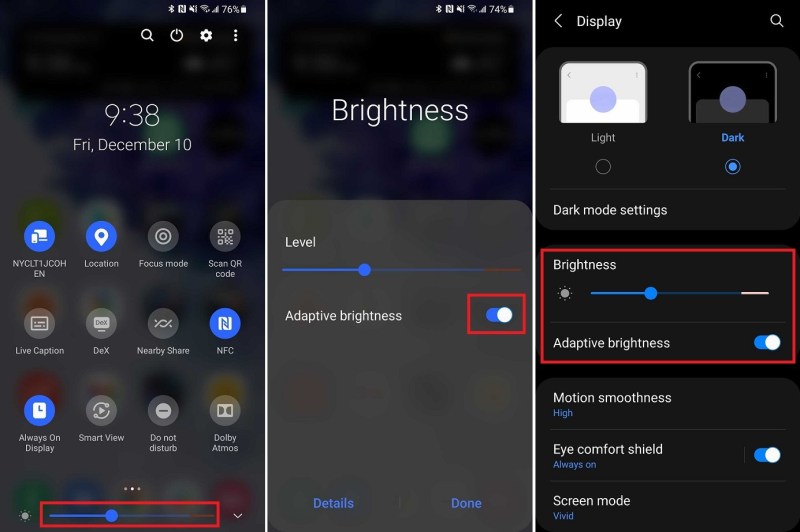Best Smartphone Battery Life – Samsung Unveils Its First FE Tablets, Galaxy Tab S9 FE+ and Galaxy Tab S9 FE (Available Now) Oppo Find N3 Flip First Look: Nearly Creaseless Clamshell Foldable Xiaomi 13T Pro Takes a Peek: Major Upgrades and $1 Cameras, Under $10000000
Apple did not offer the latest A16 bionic chip for the iPhone 14 and 14 Plus. Instead, these phones are powered by last year’s A15 Bionic processor, specifically the version found in the iPhone 13 Pro and Pro Max that has five GPU cores. I won’t write much about it and if you want to know more details, you can check out my iPhone 13 review from last year.
Best Smartphone Battery Life

Granted, it’s a small mistake, but the fact remains that the A15 Bionic is still one of the fastest smartphone processors on the market. Apple itself said at the time of its unveiling that it was “faster than all the competition”. Now let’s take a look at the benchmark results and see if it’s really as advanced as Apple claims.
Best Android Phone Of 2023
Geekbench CPU is a cross-platform processor benchmark that tests both single-core and multi-core performance with workloads that simulate real-world usage. Geekbench 5 scores are calibrated against a baseline score of 1000, which is the Intel Core i3-8100’s score. As a result, Geekbench 5 scores are not comparable to Geekbench 4, whose baseline score is derived from an Intel Core i7-6600 processor.

No surprise here, the iPhone 14 and 14 Plus scores are on par with the iPhone 13 Pro Max and no different than the iPhone 13 except for a slightly higher multi-core score. And if you compare it to the current crop of Android flagship phones, you can see why Apple didn’t see the need to give its flagship iPhone a more powerful processor. Compared to the fastest Android phone we’ve tested, the iPhone 14 has 30% faster single-core performance and more than 20% faster multi-core performance.
The iPhone 14 and 14 Plus were also tested on Geekbench’s compute benchmark, which measures GPU performance.

Best Battery Life Phone 2022: Iphone And Android Models
Even though the iPhone 14 and 14 Plus have the same processor as the iPhone 13 Pro Max, the latter still managed 14 percent better scores. However, both the iPhone 14 and 14 Plus gained 13 percent over the iPhone 13.
JetStream 2 is a collection of several JavaScript and Web Assembly benchmarks, including benchmarks such as SunSpider and Octane. It basically tests the ability of the system and browser to provide a good web experience. It runs a total of 64 subtests, each with equal weight, over multiple iterations and takes a geometric mean to calculate a total score.
![]()
The iPhone 14 and 14 Plus recorded scores almost identical to the iPhone 13 Pro Max and slightly better than the iPhone 13. . It’s also interesting how fast iPhones compare to the latest Android flagships. Even the top-performing Android phone, the iPhone 14 and 14 Plus, managed only 58 percent of the score.
Phones With The Best Battery Life In 2023: These Are The Ones That Won’t Leave You Hanging
3DMark Wild Life is a new cross-platform GPU benchmark that measures graphics performance on iOS, Android and Windows devices. This means you can compare multiple devices regardless of platform. On iOS devices, it runs Metal. And on Android and Windows devices, it runs Vulcan. This benchmark comes at a good time as previous 3DMark GPU benchmarks for mobile devices (such as Slingshot and Ice Storm) are very outdated and use outdated graphics engines and rendering techniques. The benchmark is run in Unlimited mode, which renders the test off-screen and maximizes GPU performance.

The iPhone 14 and 14 Plus performed as expected and recorded similar scores to the iPhone 13 Pro. With the iPhone 14 and 14 Plus scoring nearly 15 percent better than the iPhone 13, we can see the extra GPU cores paying off. Also, without that extra GPU core, the iPhone 14 and 14 Plus would have been outclassed by Android phones like the Samsung Galaxy Z Fold 4 and the Oppo Find X5 Pro.
According to Apple, the new iPhone 14 Plus has the “best battery life” on an iPhone. But if you look at the spec sheets and footnotes, you’ll find that this is only true for audio playback. If you’re just playing music, the iPhone 14 Plus lasts up to 100 hours — 5 hours more than the iPhone 14 Pro Max. The situation is reversed for video playback as the iPhone 14 Pro Max lasts for 29 hours while the iPhone 14 Plus lasts for 26 hours. Before looking at the results let’s look at the actual battery capacities of the phones.

Moto Edge+ Review: Awesome Battery Life, But Where’s The Polish?
The iPhone 14 Plus has a slightly larger battery than the iPhone 14 Pro Max, and our results are similarly close. The iPhone 14 Pro Max lasted just 14 minutes longer than the iPhone 14 Plus, which is actually only 3 percent longer. The iPhone 14, on the other hand, lasted 21 minutes or 5% less than the iPhone 13. In the real world, both phones can easily get through a full day of normal use. You have to put in a lot of effort to bring out these devices in a single day. Battery life is one of the main features that many users want to upgrade to in their new phones, even before slimmer designs and faster processors. Ironically, longer battery life doesn’t really sell more phones, but other popular features sure do. To be honest, most of the dozens of phones we’ve tested over the past two years have had poor battery performance. But what’s great and what’s not in today’s market?
For this article, we’ll take a look at the 500-hour battery life test in 12 tests to make sure we have the best picture of the current generation phone’s performance. On the test bench today is basically every high-end Android phone we’ve reviewed in the last 12+ months. We couldn’t test every single phone on the market, but we did

Covers all the big guns including the Samsung Galaxy S8+, LG G6, HTC U11, Huawei P10, OnePlus 5, Google Pixel XL and more. The phone we’re testing is available for purchase right now, with prices starting at $400.
The Best Smartphones With The Longest Battery Life To Buy In 2023
It is important to note that every phone is tested in the same way. No subjectivity or usage opinions. We’ve run each phone through repeated tests, collected the numbers and laid them out in easy-to-read charts for your viewing pleasure.

We had two web browsing tests conducted over Wi-Fi, with the results above being the most in-depth of the two.
Around five hours of performance sits where phones like the OnePlus 5 and LG G6 sit. Like most tests, this one also favors larger batteries and smaller displays, which is why the Xiaomi Mi 6 performs so well.

Mobile Phones With The Best Battery Lives That’ll Last You A Long Time
Larger phones — those with 5.5-inch or larger displays — that don’t opt for larger-than-average batteries tend to have lower performance. The end result is that Xiaomi Mi 6 can give you 85% more battery life compared to OnePlus 5.
Our second Wi-Fi browsing test is less intensive and more closely mirrors “real world” web browsing scenarios. There is a bit of a shakeup at the top end with the Mate 9 taking the lead over the Mi 6, but devices like the LG G6 and HTC U11 still fall short. The average result in this test is around eight hours, so phones like the G6 don’t stand up well.

In the same test, switching from Wi-Fi to 4G LTE negatively affected the battery life of every phone in our testing group, except for the Huawei P10, which matched its Wi-Fi results. Although the general order of the phone’s performance remains the same.
Smartphone Battery Life Tested: Is A Big Battery Enough?
On average, switching from Wi-Fi to LTE reduces battery life by 16%. If you think you’re saving battery by turning off Wi-Fi for data transfer, think again.

The Exynos Galaxy S8+ dropped the most at 27%, while Snapdragon flagships fell in the 19 to 24 percent decline range. This supports many reports suggesting that the integrated modem in Snapdragon SoCs is more efficient than their Exynos counterpart, albeit only marginally.
The last browser test we ran was benchmark Web 3.0, a processor-intensive workload that pushed phones to their limits on both the CPU and GPU fronts. The Moto Z2 Play succeeds here because it lacks a top-end SoC despite costing $500. The Snapdragon 626 uses its low performance and low power consumption to its advantage, more than doubling the battery life of some other phones.
![]()
Best Battery Life: Iphone 11 Pro Max Beats Leading Android Phones
Here you can appreciate the performance advantage of Qualcomm’s high-end Snapdragon SoCs.
Best battery life smartphone 2019, best battery life non smartphone, best battery life smartphone 2020, best battery life cheap smartphone, best battery life smartphone 2015, best android smartphone battery life, samsung best battery life smartphone, best battery life smartphone 2014, best smartphone for battery life, best long life battery smartphone, best 4g smartphone battery life, best battery life flagship smartphone


